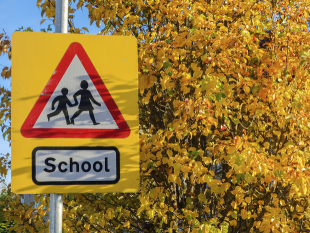
Today's blog provides further details on the scientific evidence underpinning our plans for the wider opening of schools.
Questions on the protective measure being put in place in schools
On Sunday 10 May, the Prime Minister announced plans for a phased wider opening of schools, colleges, and early years settings. As part of this, we published guidance setting out a range of protective measures to be put in place.
We know teachers, staff, and parents will be keen to understand what this means for pupils and we have received questions from the media on the details of this guidance.
A Q&A setting out more can be found below, including why primary schools have been prioritised and how the department has worked on the basis of scientific and medical advice.
Does the DfE intend for children in nursery, Reception, Year 1 and Year 6 to return to school full-time or can they return on a rota basis?
These year groups should return to school full-time.
The government has said its decision to increase the numbers of children and young people attending schools and colleges is based on the latest scientific advice. Can the DfE point to the evidence underpinning this?
We have set out a hierarchy of controls to create an inherently safer system, where the risk of transmission of infection is substantially reduced by:
- avoiding contact with anyone with symptoms
- frequent hand cleaning and good respiratory hygiene practices
- regular cleaning of settings
- minimising contact and mixing
We know that, unlike older children and adults, early years and primary age children cannot be expected to remain 2 metres apart from each other and staff. Instead, we can reduce contact and transmission risk by ensuring children and staff only mix in a small, consistent group and stay away from other people and groups. We are asking schools to limit class sizes and keep children in small groups of no more than 15.
Why have primary schools been prioritised?
We will prioritise younger children in the first phases of wider opening, for several reasons. Firstly, because there is moderately high scientific confidence in evidence suggesting younger children are less likely to become unwell if infected with coronavirus (COVID-19); and secondly because evidence shows the particularly detrimental impact which time spent out of education can have upon them. In addition, older children are more likely to have higher numbers of contacts outside of school so pose a greater transmission risk, and they are typically better able to learn at home.
The three year groups within mainstream primary have been prioritised because they are key transition years – children in Reception and year 1 are at the very beginning of their school career and are mastering the essential basics, including counting and the fundamentals of reading and writing, and learning to socialise with their peers. We know that attending early education lays the foundation for lifelong learning and supports children’s social and emotional development. Year 6 children are finishing Key Stage 2 and are preparing for the transition to secondary school and will benefit immensely from time with their friends and teachers to ensure they are ready.
Has any modelling been carried out of the effect of wider opening from 1 June?
As a result of the huge efforts everyone has made to adhere to strict social distancing measures, the transmission rate of coronavirus (COVID-19) has decreased. We therefore anticipate, with further progress, that we may be able, from the week commencing 1 June, to welcome back more children to early years, school and further education settings. We will only do this provided that the five key tests set by government justify the changes at the time, including that the rate of infection is decreasing.
Our latest understanding of the science indicates that we need to take a phased approach to limit the risk of increasing the rate of transmission (often referred to as R) above 1. We have factored in:
- severity of disease in children – there is high scientific confidence that children of all ages have less severe symptoms than adults if they contract coronavirus (COVID-19)
- the age of children – there is moderately high scientific confidence that younger children are less likely to become unwell if infected with coronavirus (COVID-19)
- numbers of children going back – which needs to be limited initially then increased gradually as the science permits
- systems to reduce the size of the groups coming into contact with each other – such as smaller class sizes spread out across settings